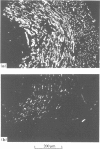Abstract
alpha-Adrenoceptor antagonists (prazosin or phentolamine) reduced the contractile response to field stimulation of the isolated vasa deferentia of guinea-pig, rat and mouse. alpha, beta-Methylene ATP (alpha, beta-MeATP) reduced that portion of the contraction which was resistant to alpha-adrenoceptor blockade. alpha, beta-MeATP (1-800 microM) did not affect action potential conduction in the guinea-pig vas deferens nerves, and (up to 10 microM) did not reduce the stimulation-evoked overflow of [3H]-noradrenaline from this tissue. Spontaneous excitatory junction potentials (s.e.j.ps) in the majority of cells of guinea-pig, rat, and mouse vasa were abolished by alpha, beta-MeATP (0.1-10 microM). In a small number of cells s.e.j.ps were resistant to the actions of alpha, beta-MeATP (10 microM). Excitatory junction potentials (e.j.ps) in the majority of cells in vasa of all species studied were abolished by alpha, beta-MeATP (1-10 microM). E.j.ps elicited in some 'resistant' cells demonstrated marked facilitation characteristics. It is concluded that alpha, beta-MeATP inhibits s.e.j.ps and e.j.ps by a postjunctional action. In all species pretreatment of animals with 6-hydroxydopamine produced a marked reduction in noradrenaline (NA) content (as determined by fluorescence histochemistry) and abolished e.j.ps, findings which suggest that e.j.ps originated from sympathetic nerves. The results support the hypothesis that NA and ATP are co-transmitters in the sympathetic nerves of rodent vasa.
Full text
PDF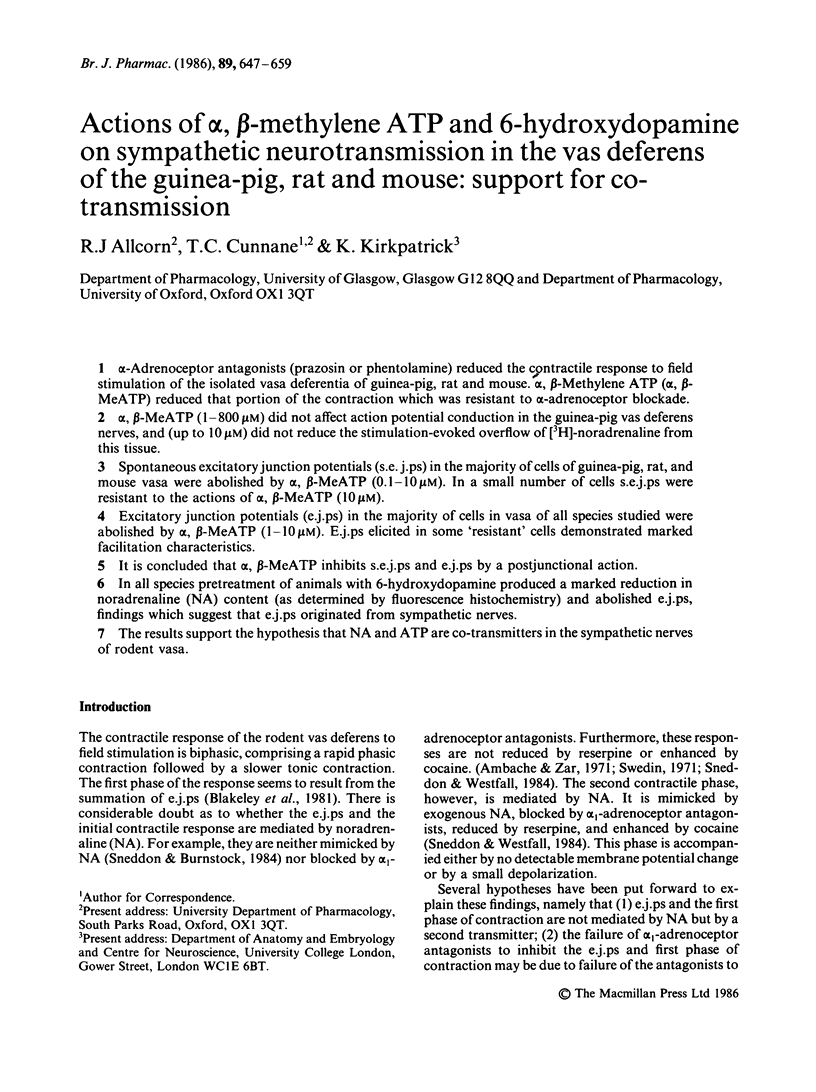


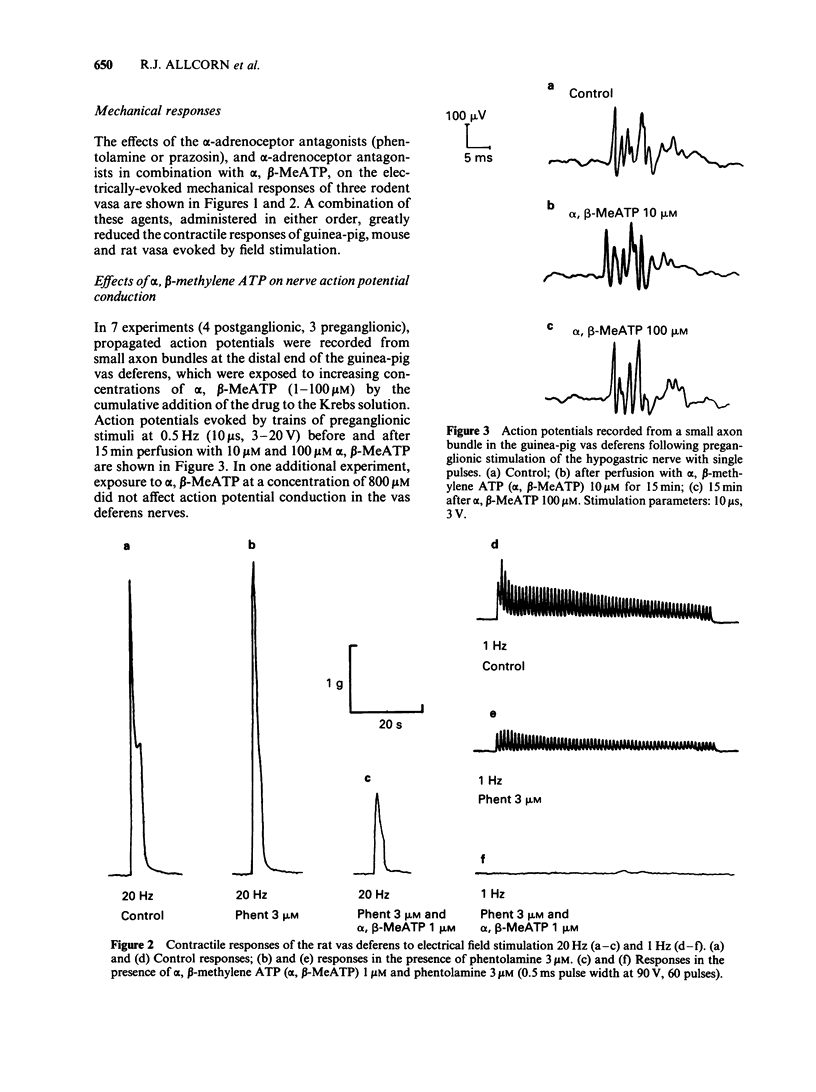

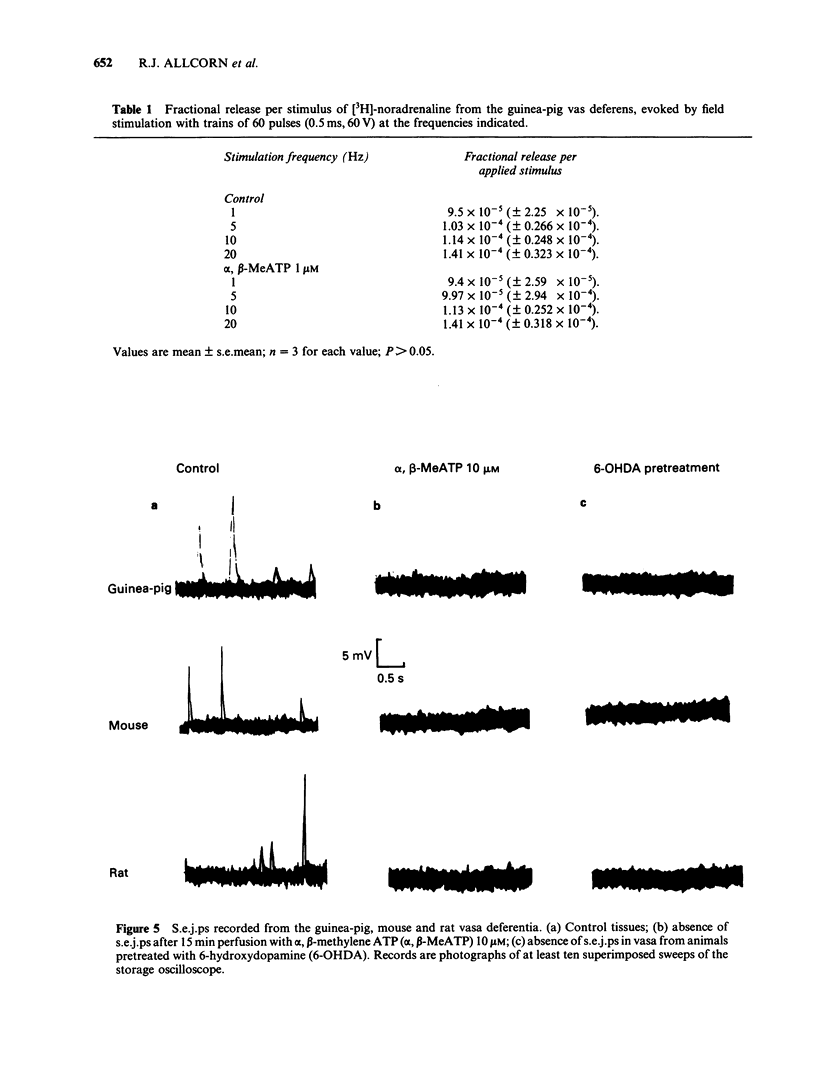

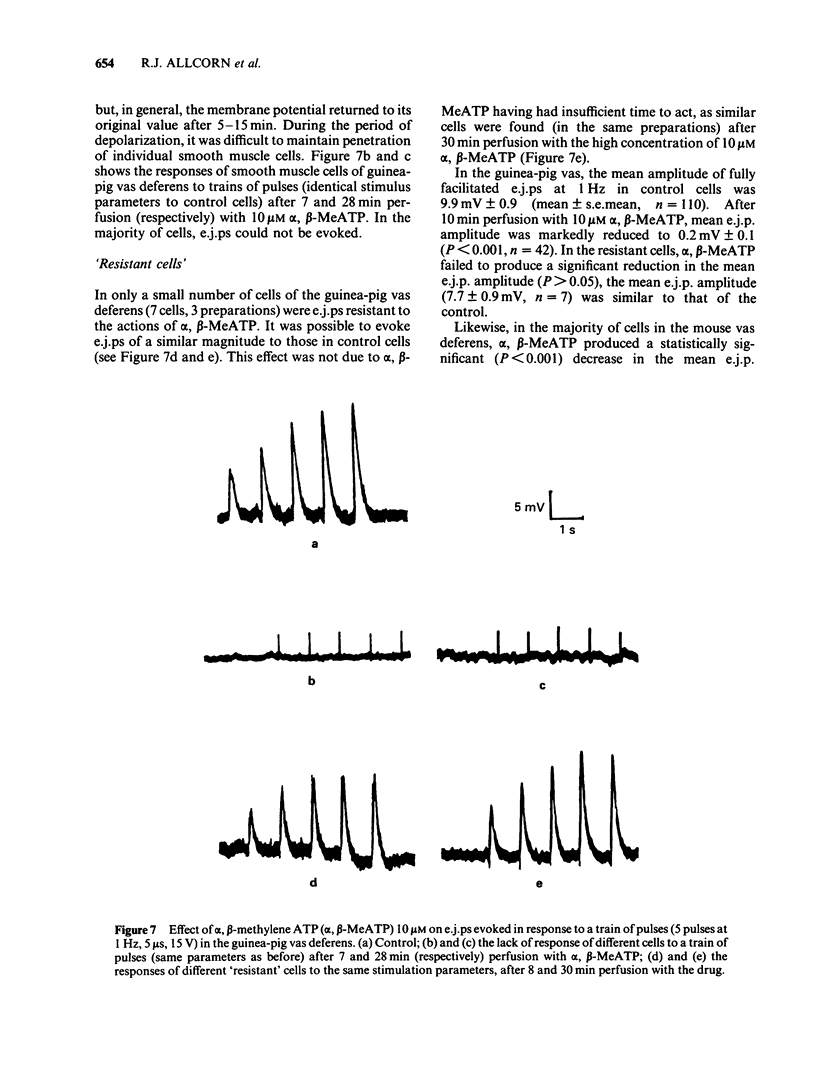





Images in this article
Selected References
These references are in PubMed. This may not be the complete list of references from this article.
- Alberts P., Bartfai T., Stjärne L. Site(s) and ionic basis of alpha-autoinhibition and facilitation of "3H'noradrenaline secretion in guinea-pig vas deferens. J Physiol. 1981 Mar;312:297–334. doi: 10.1113/jphysiol.1981.sp013630. [DOI] [PMC free article] [PubMed] [Google Scholar]
- Blakeley A. G., Brown D. A., Cunnane T. C., French A. M., McGrath J. C., Scott N. C. Effects of nifedipine on electrical and mechanical responses of rat and guinea pig vas deferens. Nature. 1981 Dec 24;294(5843):759–761. doi: 10.1038/294759a0. [DOI] [PubMed] [Google Scholar]
- Cunnane T. C., Stjärne L. Transmitter secretion from individual varicosities of guinea-pig and mouse vas deferens: highly intermittent and monoquantal. Neuroscience. 1984 Sep;13(1):1–20. doi: 10.1016/0306-4522(84)90255-0. [DOI] [PubMed] [Google Scholar]
- Fedan J. S., Hogaboom G. K., O'Donnell J. P., Colby J., Westfall D. P. Contribution by purines to the neurogenic response of the vas deferens of the guinea pig. Eur J Pharmacol. 1981 Jan 5;69(1):41–53. doi: 10.1016/0014-2999(81)90600-2. [DOI] [PubMed] [Google Scholar]
- Furness J. B. Transmission to the longitudinal muscle of the guinea-pig vas deferens: The effect of pretreatment with guanethidine. Br J Pharmacol. 1974 Jan;50(1):63–68. doi: 10.1111/j.1476-5381.1974.tb09593.x. [DOI] [PMC free article] [PubMed] [Google Scholar]
- Gillespie J. S., Kirpekar S. M. The histological localization of noradrenaline in the cat spleen. J Physiol. 1966 Nov;187(1):69–79. doi: 10.1113/jphysiol.1966.sp008076. [DOI] [PMC free article] [PubMed] [Google Scholar]
- HUKOVIC S. Responses of the isolated sympathetic nerveductus deferens preparation of the guinea-pig. Br J Pharmacol Chemother. 1961 Apr;16:188–194. doi: 10.1111/j.1476-5381.1961.tb00312.x. [DOI] [PMC free article] [PubMed] [Google Scholar]
- Hirst G. D., Neild T. O. Evidence for two populations of excitatory receptors for noradrenaline on arteriolar smooth muscle. Nature. 1980 Feb 21;283(5749):767–768. doi: 10.1038/283767a0. [DOI] [PubMed] [Google Scholar]
- Sneddon P., Burnstock G. Inhibition of excitatory junction potentials in guinea-pig vas deferens by alpha, beta-methylene-ATP: further evidence for ATP and noradrenaline as cotransmitters. Eur J Pharmacol. 1984 Apr 13;100(1):85–90. doi: 10.1016/0014-2999(84)90318-2. [DOI] [PubMed] [Google Scholar]
- Sneddon P., Westfall D. P. Pharmacological evidence that adenosine triphosphate and noradrenaline are co-transmitters in the guinea-pig vas deferens. J Physiol. 1984 Feb;347:561–580. doi: 10.1113/jphysiol.1984.sp015083. [DOI] [PMC free article] [PubMed] [Google Scholar]
- Swedin G. Studies on neurotransmission mechanisms in the rat and guinea-pig vas deferens. Acta Physiol Scand Suppl. 1971;369:1–34. [PubMed] [Google Scholar]
- Westfall D. P., Stitzel R. E., Rowe J. N. The postjunctional effects and neural release of purine compounds in the guinea-pig vas deferens. Eur J Pharmacol. 1978 Jul 1;50(1):27–38. doi: 10.1016/0014-2999(78)90250-9. [DOI] [PubMed] [Google Scholar]



